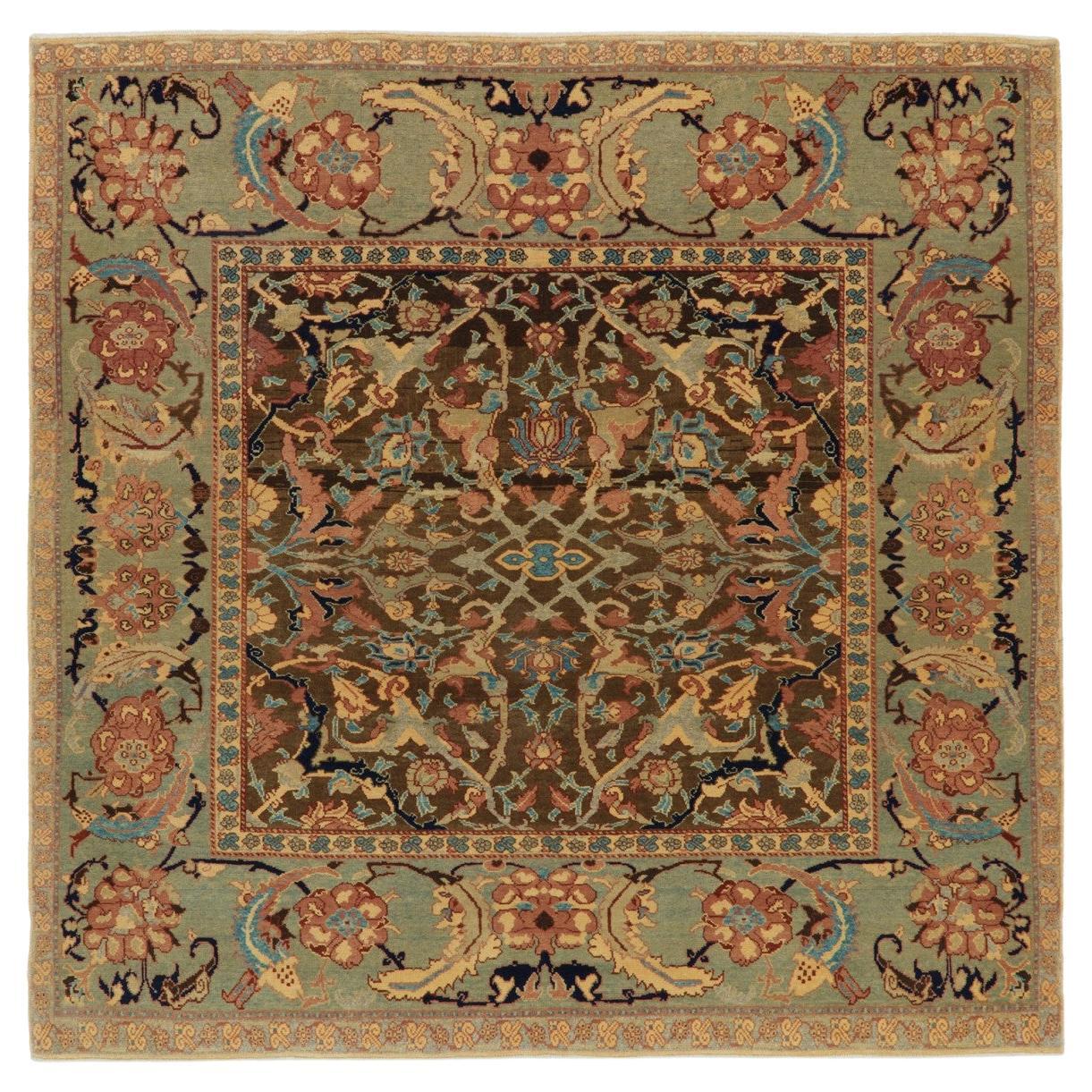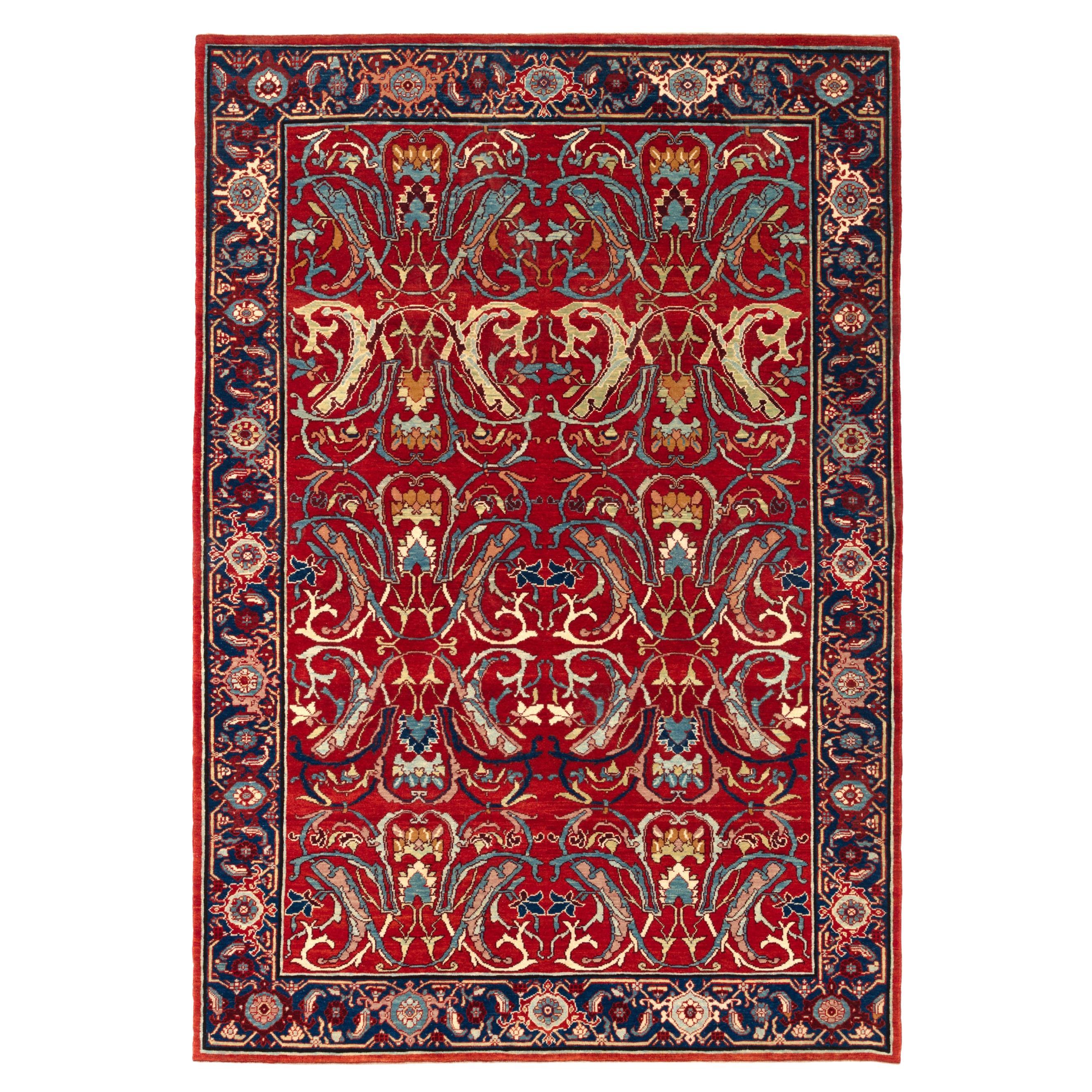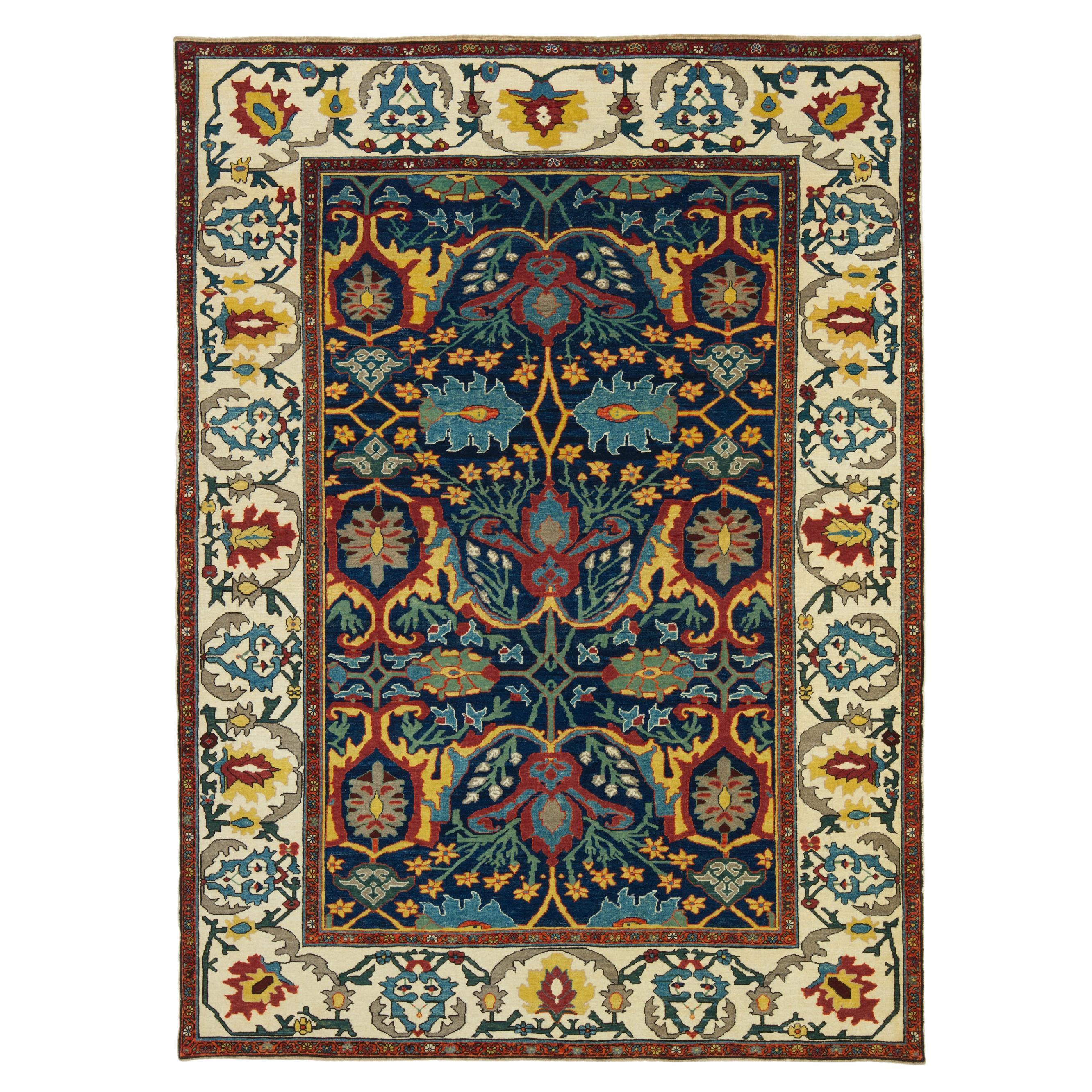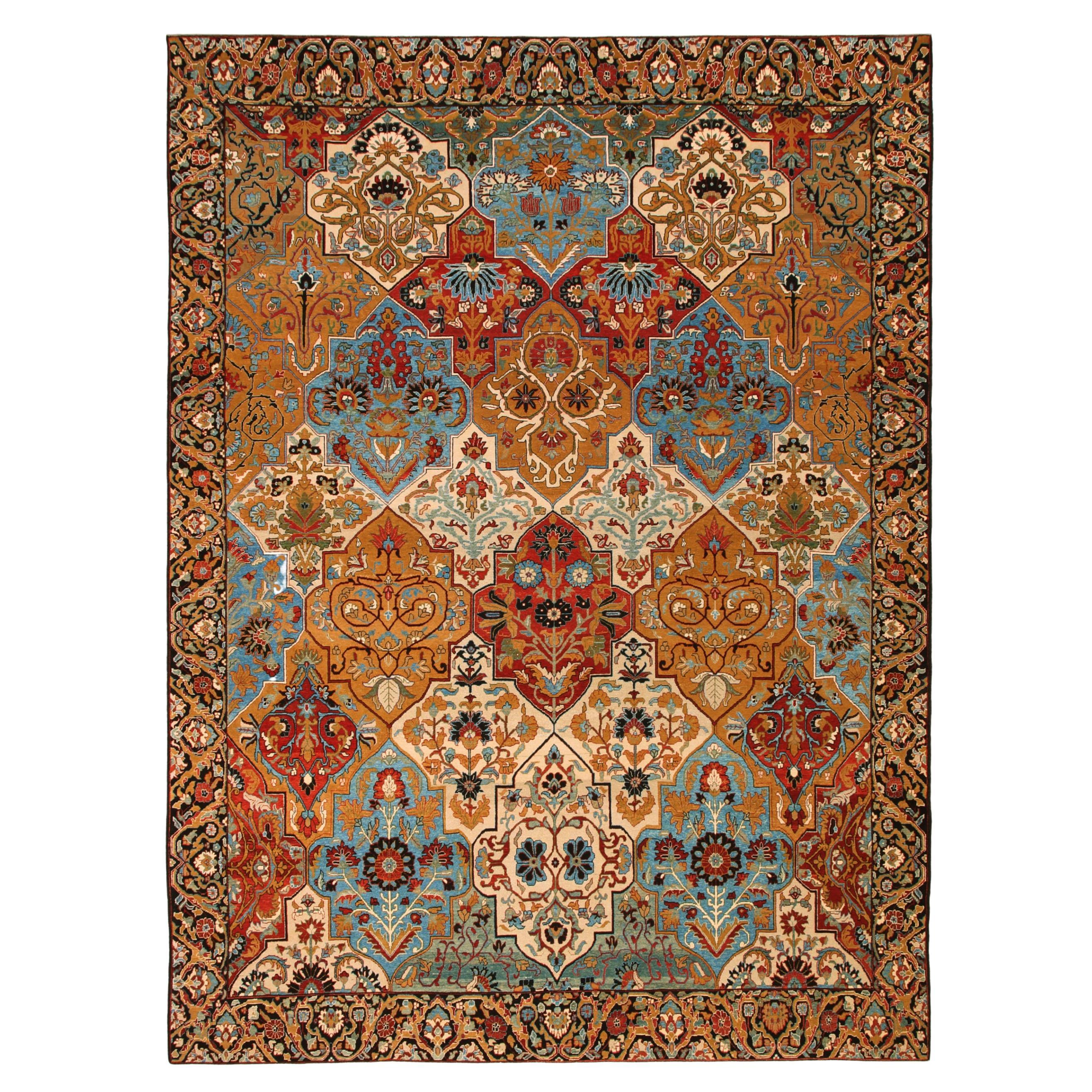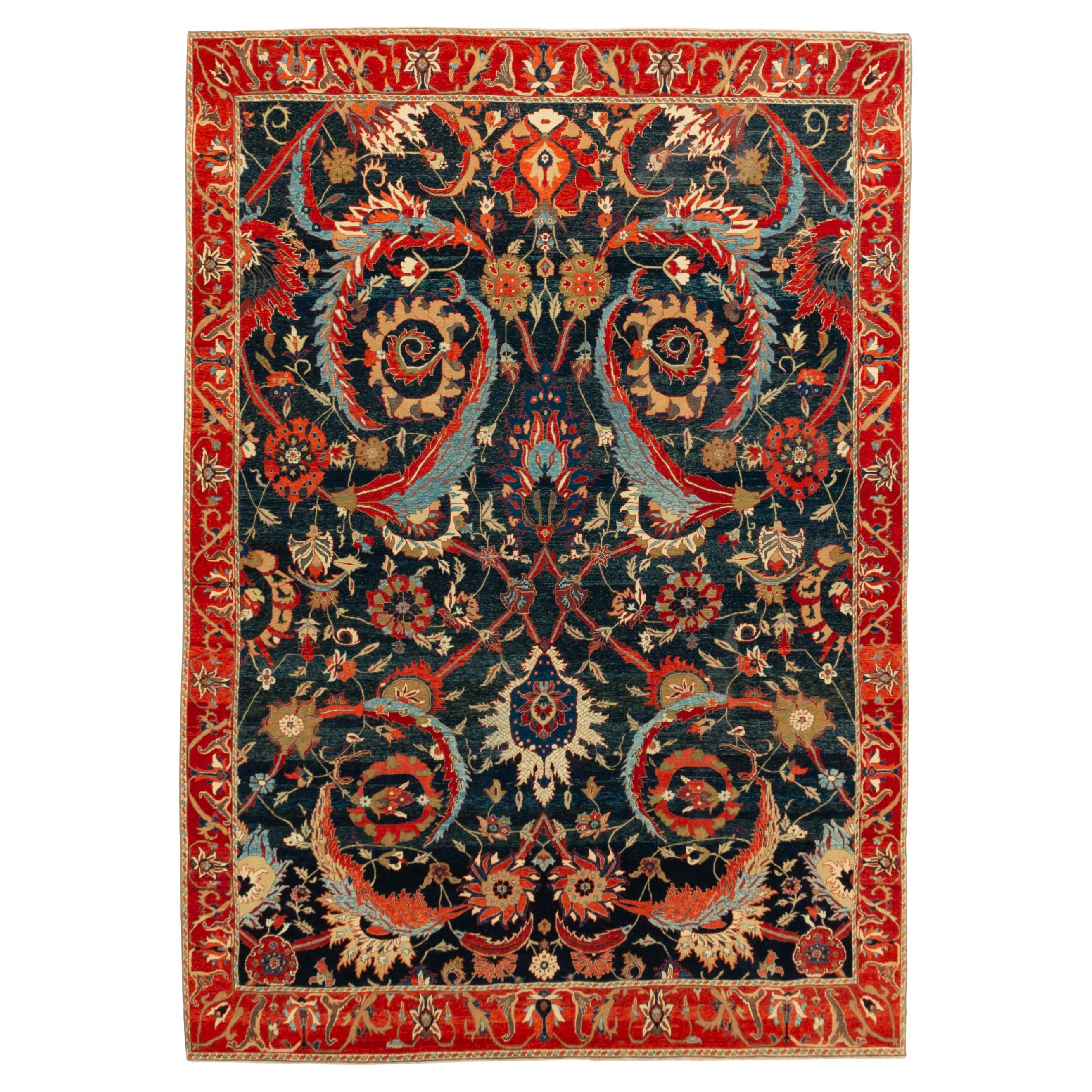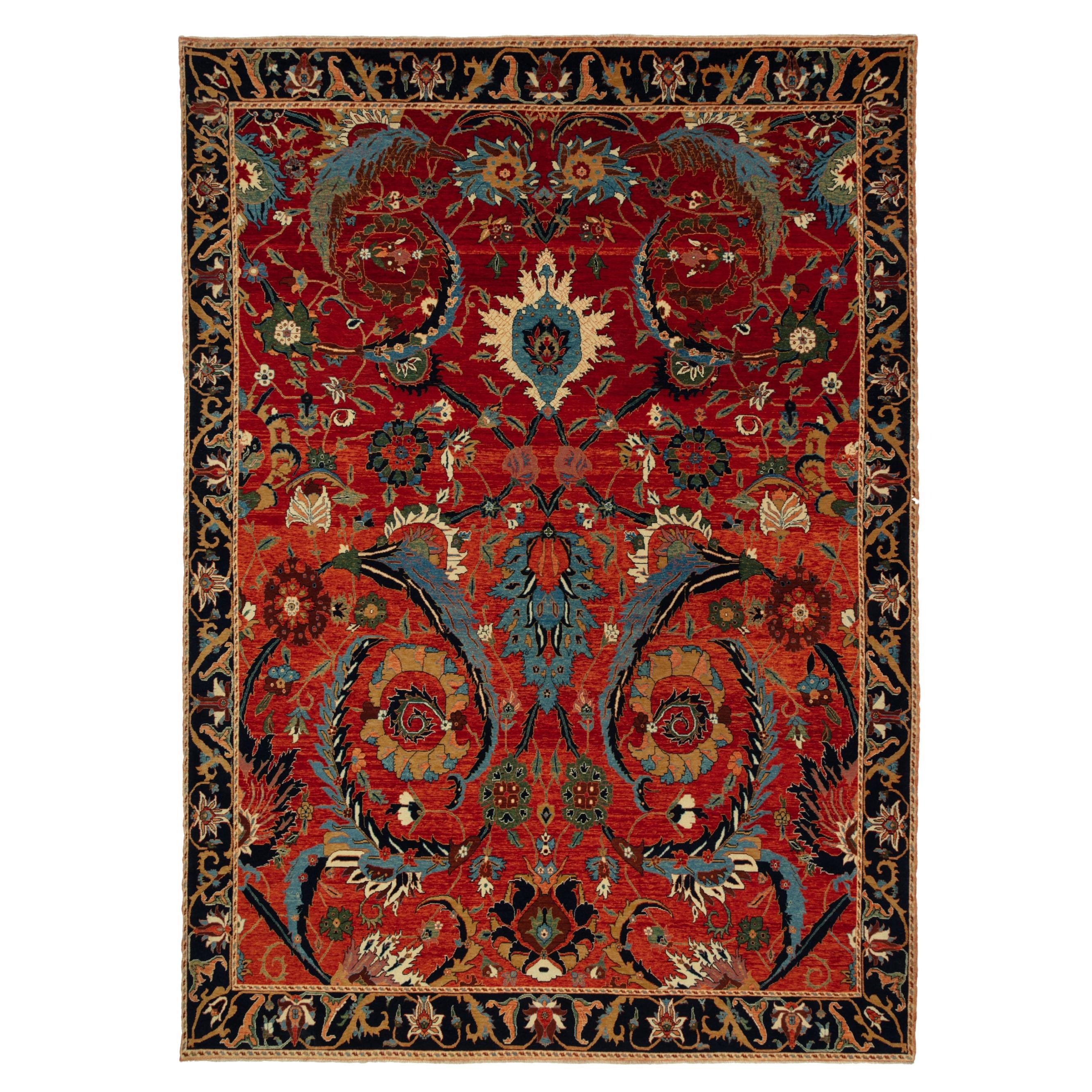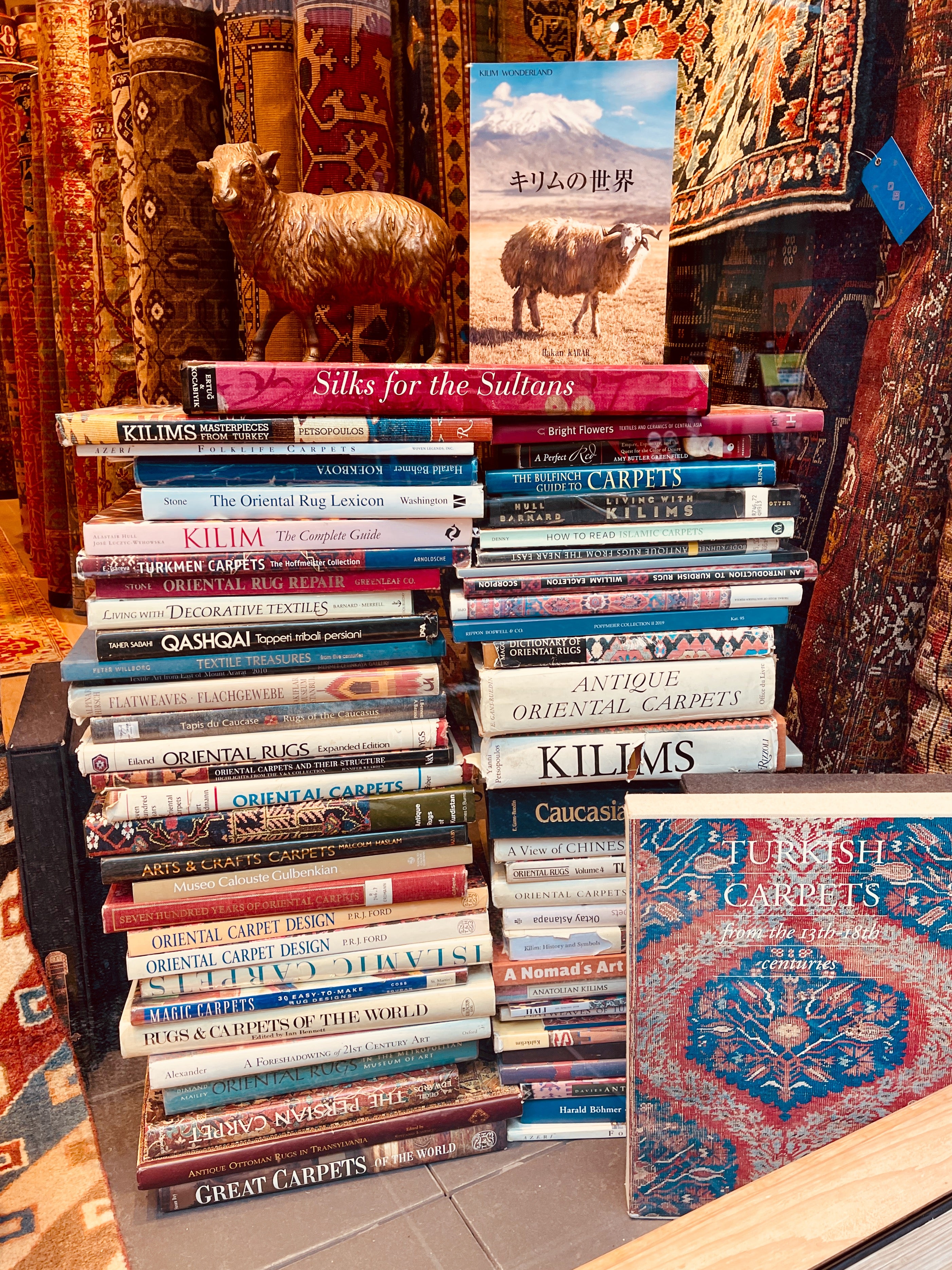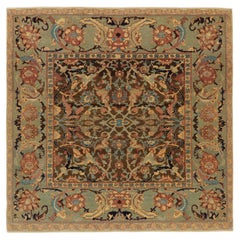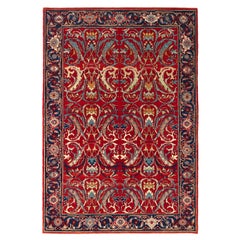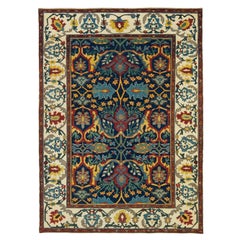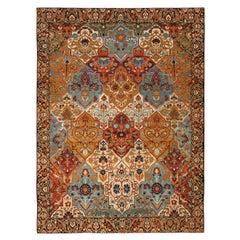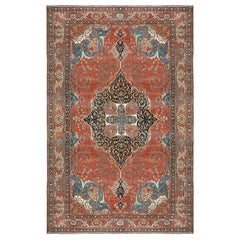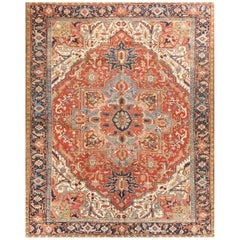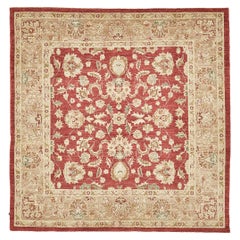Items Similar to Ararat Rugs Polonaise Carpet, 17th Century Museum Piece Revival, Natural Dyed
Video Loading
Want more images or videos?
Request additional images or videos from the seller
1 of 8
Ararat Rugs Polonaise Carpet, 17th Century Museum Piece Revival, Natural Dyed
$8,800
£6,677.24
€7,634.82
CA$12,291.21
A$13,666.16
CHF 7,135.71
MX$166,350.41
NOK 91,048.59
SEK 85,308.18
DKK 56,980.10
Shipping
Retrieving quote...The 1stDibs Promise:
Authenticity Guarantee,
Money-Back Guarantee,
24-Hour Cancellation
About the Item
The source of the carpet comes from the book 'Oriental Rugs in the Metropolitan Museum of Art, by Dimand, Maurice S., and Jean Mailey, The Metropolitan Museum of Art, New York, 1973, fig.90.'
If the so-called vase-technique carpets represented the triumph of Safavid workshop weaving in the seventeenth century, another group of Safavid carpets, popularly, if erroneously, known as “Polonaise” or “Polish” carpets, demonstrates the extent to which Safavid weavers would go to create flashy and expensive objects of conspicuous consumption. Polonaise carpets are believed to have been woven in state-controlled workshops in seventeenth-century Iran and were probably created specifically as royal gifts to noble supporters of the regime and to foreign dignitaries. Why Poland. In time-honored and still current Middle Eastern practice, “the enemy of my enemy is my friend.” Seventeenth-century Roman Catholic Polish and Shi’ite Muslim Persian Kings had one thing in common: they were both opposed to the vast Sunni Muslim Ottoman Turkish Empire that lay between their two kingdoms.
The exact example is exhibited at The Metropolitan Museum of Art (MET Museum). The most appropriate colors to match the original is used for this reinterpreted carpet.
Color summary: 14 colors in total most used 4 colors are;
Red 426 (madder root)
Brown 411 (pomegranate skin)
White 320 (only specially washed)
Blue 409 (indigo)
Group: Northwest Persia Rugs Family
Area: Bidjar
Material of Pile: Natural Dyed Hand-spun Wool
Material Warp / Weft: Wool on Wool
Structure: Symmetrical knot on depressed warp inclining to the right
Knots Density: 39x39
Production Place: Southeastern Anatolia – Diyarbakir
Stock Location: Tokyo
Size (EU): 181 X 213cm
Size (US): 5.11" X 6.11"
Area (EU): 3.9m²
Area (US): 41.5ft².
- Creator:Ararat Rugs (Manufacturer)
- Dimensions:Width: 71.26 in (181 cm)Length: 83.86 in (213 cm)
- Style:Revival (In the Style Of)
- Materials and Techniques:
- Place of Origin:
- Period:
- Date of Manufacture:2022
- Production Type:New & Custom(One of a Kind)
- Estimated Production Time:Available Now
- Condition:
- Seller Location:Tokyo, JP
- Reference Number:Seller: 002641stDibs: LU8206232737612
ARARAT RUGS
We know and believe that the geography we come from, our past, and our lifestyle are the most important bond between us to carry the oriental carpet art and culture to the next generations along with our core values in our ongoing growth journey.
We are aware that the way to achieve this goal and carry this priceless art and culture to the future depends on a lot of work with all our people every day while adhering to our core values.
For us, art is meaningful in the sense that it brings together various cultures around the world. It is an honor for us that oriental carpet art and culture have been instrumental in this for centuries and that we are a part of this business.
We are tirelessly keeping an eye on auction house information around the world about carpets. New York's Metropolitan, London's Victoria & Albert Museums, and other famous art museums, as well as small specialized museums that house private collections, and books about oriental carpets to collect information on outstanding carpet designs and patterns from around the world. It's our Self-improving and Self-developing culture.
As Turkish Culture of Hospitality, the Kurdish Culture of Generosity, and as Japanese Culture of Business Punctuality; are the most important values that this multicultural background has taught and bequeathed to us. It is essential and valuable for us that you feel this feeling not only by looking at our oriental carpets but from the moment you contact us.
About the Seller
5.0
Platinum Seller
Premium sellers with a 4.7+ rating and 24-hour response times
Established in 1970
1stDibs seller since 2023
55 sales on 1stDibs
Typical response time: 3 hours
- ShippingRetrieving quote...Shipping from: Tokyo, Japan
- Return Policy
Authenticity Guarantee
In the unlikely event there’s an issue with an item’s authenticity, contact us within 1 year for a full refund. DetailsMoney-Back Guarantee
If your item is not as described, is damaged in transit, or does not arrive, contact us within 7 days for a full refund. Details24-Hour Cancellation
You have a 24-hour grace period in which to reconsider your purchase, with no questions asked.Vetted Professional Sellers
Our world-class sellers must adhere to strict standards for service and quality, maintaining the integrity of our listings.Price-Match Guarantee
If you find that a seller listed the same item for a lower price elsewhere, we’ll match it.Trusted Global Delivery
Our best-in-class carrier network provides specialized shipping options worldwide, including custom delivery.More From This Seller
View AllArarat Rugs Polonaise Square Carpet, 17th Century Museum Revival, Natural Dyed
By Ararat Rugs
Located in Tokyo, JP
The source of the carpet comes from the book Oriental Rugs in the Metropolitan Museum of Art, Dimand, Maurice S., and Jean Mailey, The Metropolitan Museum of Art, New York 1973 fig.9...
Category
21st Century and Contemporary Turkish Revival Persian Rugs
Materials
Organic Material, Natural Fiber, Wool
Ararat Rugs Bidjar Sweeping Arabesques Rug Persian Revival Carpet Natural Dyed
By Ararat Rugs
Located in Tokyo, JP
This is a repeat of large sweeping arabesques in muted colors adorning the red field rug designed in the early 20th century that originates from the Bidjar region in northwestern Ira...
Category
21st Century and Contemporary Turkish Revival Persian Rugs
Materials
Wool, Natural Fiber, Organic Material
Ararat Rugs Bidjar Rug - 19th Century Design Persian Revival Carpet Natural Dyed
By Ararat Rugs
Located in Tokyo, JP
This is a Bidjar rug designed in the 19th century from the Bidjar region, also known as Bijar, which is a region in northwestern Iran known for producing some of the finest and most ...
Category
21st Century and Contemporary Turkish Revival Persian Rugs
Materials
Wool, Natural Fiber, Organic Material
Ararat Rugs Kerman Multi-Medallion Carpet 17th Century Revival Rug, Natural Dyed
By Ararat Rugs
Located in Tokyo, JP
This is an elegant multi-medallion carpet designed 17th century in the Kerman region, Persia. The carpet design shows vigorous rows of eight-pointed star medallions; ornamented with ...
Category
21st Century and Contemporary Turkish Revival Persian Rugs
Materials
Wool, Natural Fiber, Organic Material
$33,000
Free Shipping
Ararat Rugs Kerman Vase Technique Carpet 17th Century Revival Rug, Natural Dyed
By Ararat Rugs
Located in Tokyo, JP
The source of carpet comes from the book Museo Calouste Gulbenkian, Printed by Gulbenkian Museum Lisbon, in 2015, nr.52. This is a vase-technique carpet design in the 17th century in the Kerman region, of Persia. In the 16th century, in Safavid Persia, medallion rugs were among the most appreciated, but at the end of the century and the beginning of the next, a taste for decoration with floral motifs, coils, and palmettes gradually emerged, covering the entire field. This is the case, for this example design, with rugs from eastern and southern Persia. Among the latter are the famous vase-type rugs attributed to the Kerman region, to which our design belongs. Considered by some specialists to be quite atypical, this rug made in Persia, probably in Kirman in the time of Shah Abbas (1587-1625), presents, on a dark blue background, an exuberant and dynamic vegetal decoration in which horizontal and vertical rows of palmettes and stand out, due to their dimension and spiral movements, large sickle-shaped leaves, alternating with branches and flowers. The very narrow rim, with a red background, is filled with a frieze of coils and flowers. It’s a famous carpet design as ‘Kerman Vase Technique Rug, The Most Expensive Rug...
Category
21st Century and Contemporary Turkish Revival Persian Rugs
Materials
Wool, Natural Fiber, Organic Material
Ararat Rugs Kerman Vase Technique Carpet 17th Century Revival Rug, Natural Dyed
By Ararat Rugs
Located in Tokyo, JP
The design source of the carpet comes from the book Museo Calouste Gulbenkian, Printed by Gulbenkian Museum Lisbon, in 2015, nr.52. This is a vase-technique carpet design in the 17th...
Category
21st Century and Contemporary Turkish Revival Persian Rugs
Materials
Wool, Natural Fiber, Organic Material
You May Also Like
Antique Persian Sarouk Farahan Rug
By Mehraban Rugs
Located in WEST HOLLYWOOD, CA
Our beautiful antique Persian Sarouk Farahan rug is an over sized piece that is in stock at our Los Angeles retail location. Persian carpets known as Farahan are weaved from an area ...
Category
Early 20th Century Persian Sarouk Farahan Persian Rugs
Materials
Wool
Authentic Hand-Knotted Wool Antique Persian Serapi Rug
Located in West Hollywood, CA
This traditional handwoven Persian Serapi rug features an extremely fine shaded green field of ivory acanthus vine lozenge lattice with inner rust lozenge lattice, each enclosing pol...
Category
Antique Late 19th Century Persian Serapi Persian Rugs
Materials
Wool
Antique Persian Heriz Rug, circa 1900
Located in Secaucus, NJ
Antique Persian Heriz rug, circa 1900, measures: 9'4 x 11'7. This wonderful antique Heriz rug has a light and easy flow to the design and color scheme. The combination of the soft bl...
Category
Early 20th Century Persian Heriz Serapi Persian Rugs
Materials
Wool
Mehraban Natural Dye Sultanabad Revival Square Rug
By Mehraban Rugs
Located in WEST HOLLYWOOD, CA
Series of symbolic motifs and ornaments are reflected through neutral tones of embellishments to telling a historical event in the vibrant red field. The borders are beautifully hand...
Category
2010s Afghan Central Asian Rugs
Materials
Wool
Mehraban Natural Dye Sarouk Farahan Style Rug D70 Fable
By Mehraban Rugs
Located in WEST HOLLYWOOD, CA
A vibrant Sarouk Farahan Style rug that beguiles you to an all-over pattern of botanical elements that are poised to impress. The abrashed ruby field is covered by majestic patterns ...
Category
2010s Afghan Central Asian Rugs
Materials
Wool
Natural Dye Amritsar Revival Rug
By Mehraban Rugs
Located in WEST HOLLYWOOD, CA
This luxurious hand-spun wool revival of Amritsar using a vegetable dye. Fashionable florid designs and leafy scrolls are harmoniously contributed to the surrounded symmetrical flore...
Category
21st Century and Contemporary Pakistani Central Asian Rugs
Materials
Wool
More Ways To Browse
Iran Book
Thing Ottoman
France And Son Chair
Midcentury Ceramic Pitcher
Shaped Ottoman
Wingback Armchair Used
Blue Glass Sterling Silver
Bronze Three Leg Table
Brown Pitcher Antique
China Dining Chairs
Extendable Desk
Marble Top Gilt Side Table
Masters Stool
Small Spoon
Velvet Couch Brass
Vintage Van Seats
Window Seats
Antique Silver Tray With Handles
